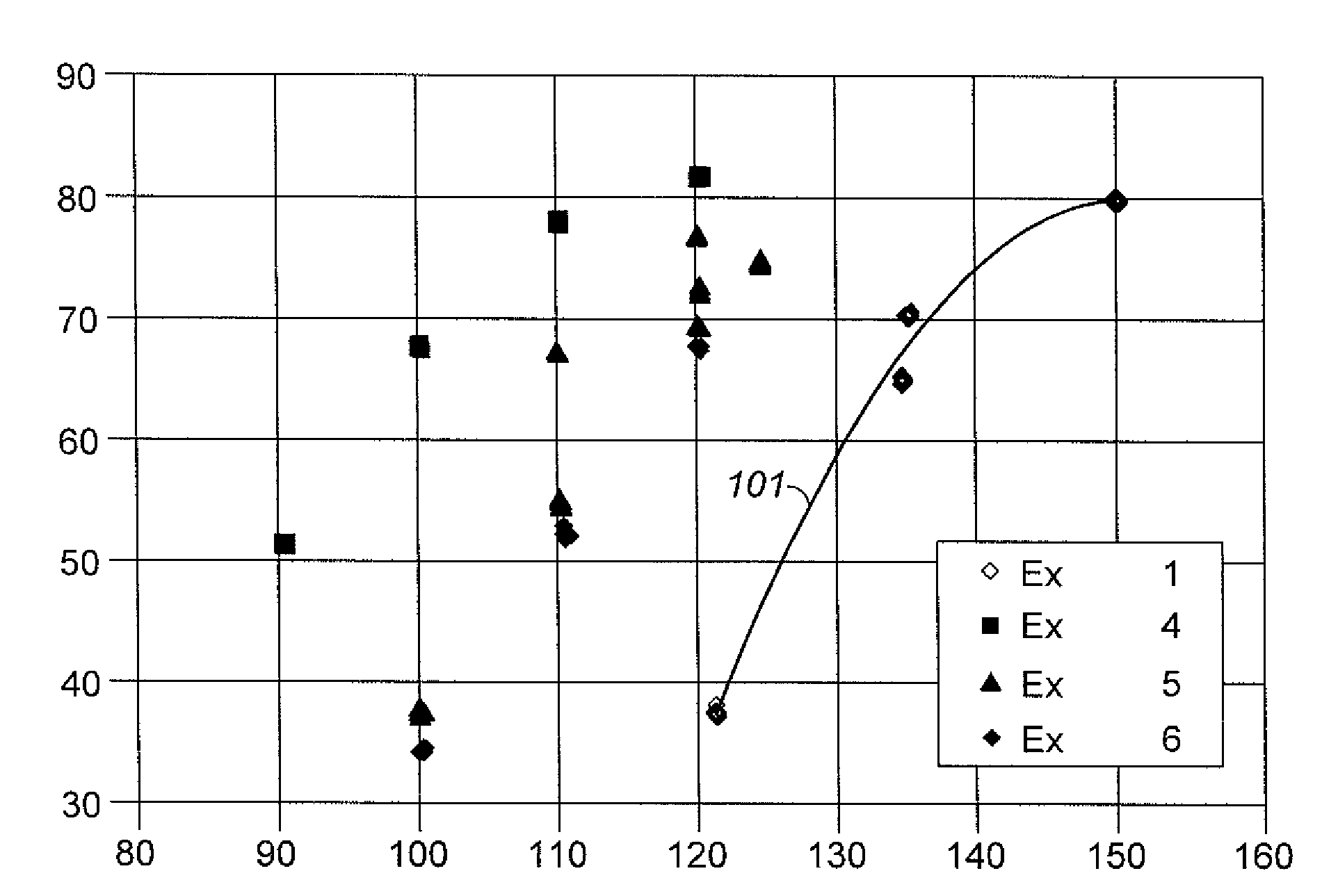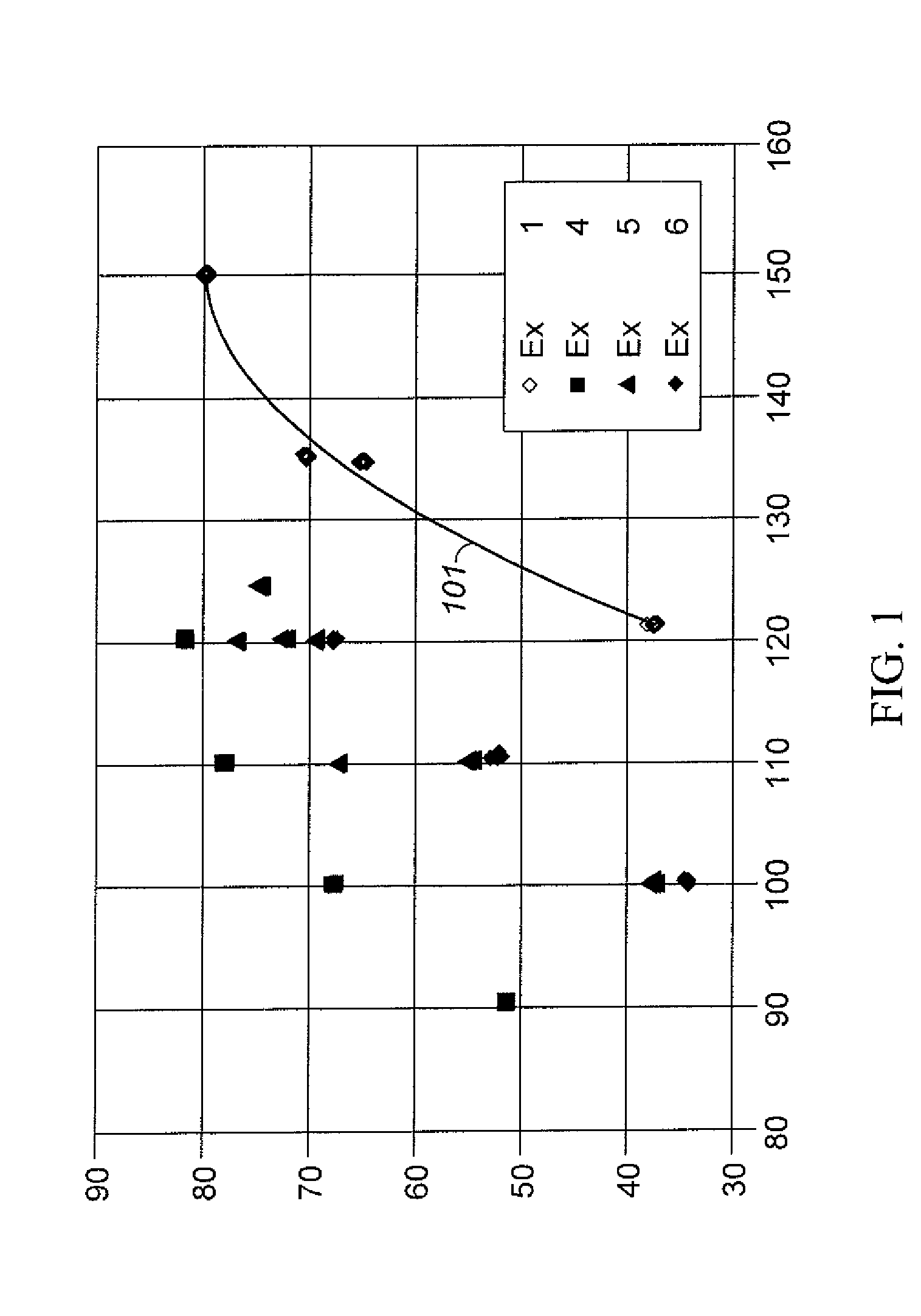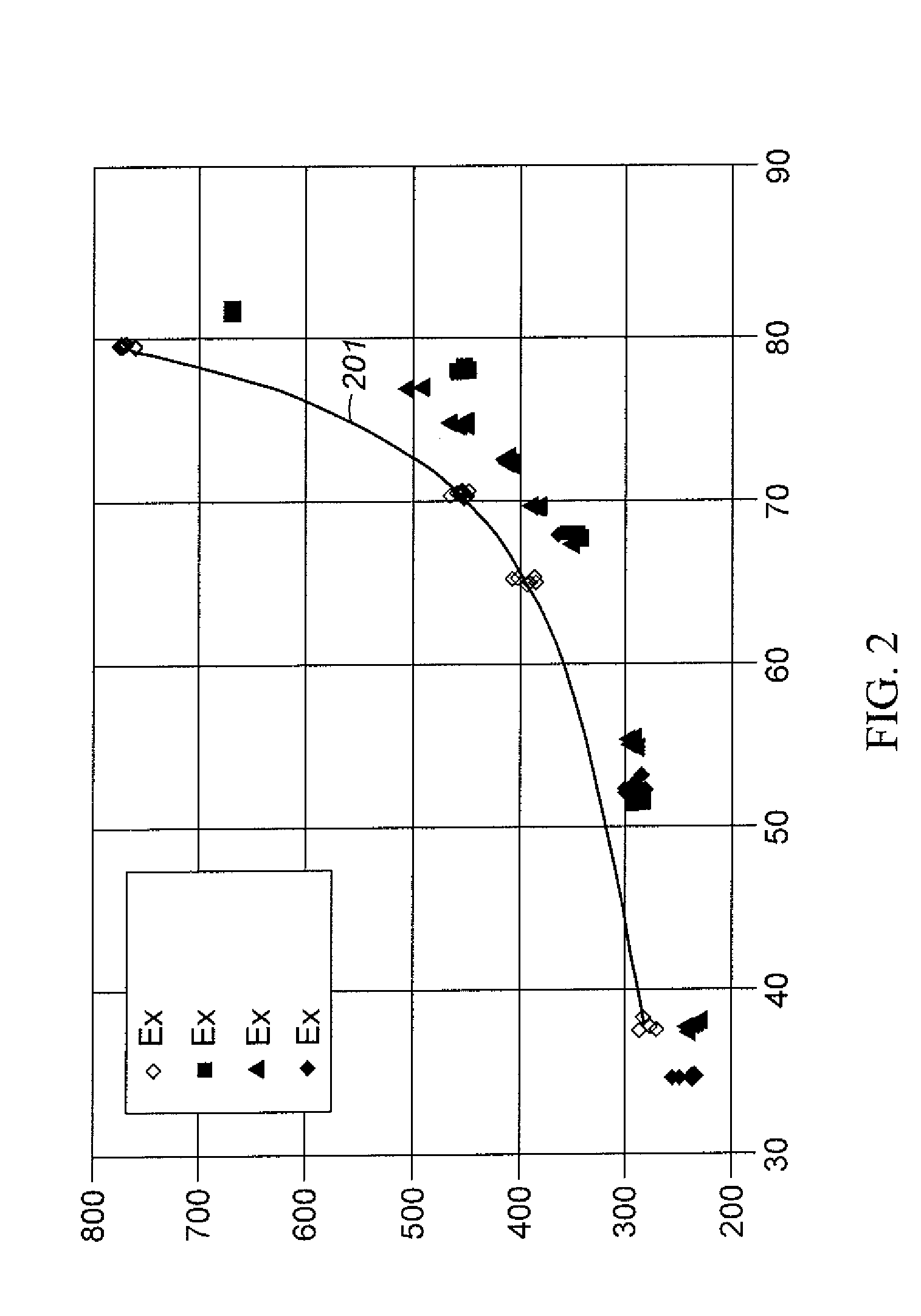Aromatic Transalkylation Using A LZ-210 Zeolite
a technology of zeolite and zeolite, which is applied in the direction of hydrocarbon preparation catalysts, physical/chemical process catalysts, bulk chemical production, etc., can solve the problems of unacceptably low rate of zeolites effect transalkylation, and achieve the effect of reducing npb formation and increasing activity
- Summary
- Abstract
- Description
- Claims
- Application Information
AI Technical Summary
Benefits of technology
Problems solved by technology
Method used
Image
Examples
example 1
Comparative
[0061]A sample of Y-74 zeolite was slurried in a 15 wt % NH4NO3 aqueous solution and the solution temperature was brought up to 75° C. (167° F.) Y-74 zeolite is a stabilized sodium Y zeolite with a bulk Si / Al2 ratio of approximately 5.2, a unit cell size of approximately 24.53, and a sodium content of approximately 2.7 wt % calculated as Na2O on a dry basis Y-74 zeolite is prepared from a sodium Y zeolite with a bulk Si / Al2 ratio of approximately 4.9, a unit cell size of approximately 24.67, and a sodium content of approximately 9.4 wt % calculated as Na2O on a dry basis that is ammonium exchanged to remove approximately 75% of the Na and then steam de-aluminated at approximately 600° C. (1112° F.) by generally following steps (1) and (2) of the procedure described in col. 4, line 47 to col. 5, line 2 of U.S. Pat. No. 5,324,877. Y-74 zeolite is produced and was obtained from UOP LLC, Des Plaines, Ill. USA After 1 hour of contact at 75° C. (167° F.), the slurry was filtere...
example 2
[0062]As synthesized Y-54 zeolite was ammonium exchanged and then treated with ammonium fluorosilicate according to the procedure described in U.S. Pat. No. 4,503,023. Y-54 zeolite is a sodium Y zeolite with a bulk Si / Al2 ratio of approximately 4.9, a unit cell size of 24.67, and a sodium content of 9.4 wt % calculated as Na2O on a dry basis Y-54 zeolite is produced and was obtained from UOP LLC, Des Plaines, Ill. USA. The resulting Y zeolite, which had a bulk Si / Al2 molar ratio of about 6.5, was steamed at about 600° C. (1112° F.) with 100% steam for 1 hour, and then ammonium exchanged. The resulting filter cake was dried to an appropriate moisture level, mixed with HNO3-peptized Pural SB alumina to give a mixture of 80 parts by weight of zeolite and 20 parts by weight Al2O3 binder on a dry basis, and then extruded into 1.59 mm ( 1 / 16 in) diameter cylindrical extrudate. The extrudate was dried and calcined at approximately 600° C. (1112° F.) for one hour in flowing air. The resulti...
example 3
[0063]As synthesized Y-54 zeolite was ammonium exchanged and then treated with ammonium fluorosilicate according to the procedure described in U.S. Pat. No. 4,503,023. The resulting Y zeolite, which had a bulk Si / Al2 molar ratio of about 9.0 and was referred to as LZ-210(9), was steamed at about 600° C. (1112° F.) with 100% steam for 1 hour. A slurry made up of 228 g of the steamed LZ-210(9) and 672 g of H2O was first prepared. A NH4NO3 solution made up of 212 g of H2O and 667 g of 50 wt % (NH4)NO3 was then added to the steamed LZ-210(9) slurry. The resulting mixture was then raised to 85° C. (185° F.) and then mixed for 15 minutes. To this mixture, 5.7 g of 66 wt % HNO3 were added, and the resulting mixture was maintained at 85° C. (185° F.) with continuous agitation for 60 minutes. At the end of acid extraction, the mixture was filtered and the cake was washed with 1000 ml of H2O, and then dried at 100° C. (212° F.) overnight. In the second part, 200 g of dry cake was added to a s...
PUM
| Property | Measurement | Unit |
|---|---|---|
| temperature | aaaaa | aaaaa |
| temperature | aaaaa | aaaaa |
| temperature | aaaaa | aaaaa |
Abstract
Description
Claims
Application Information
 Login to View More
Login to View More - R&D
- Intellectual Property
- Life Sciences
- Materials
- Tech Scout
- Unparalleled Data Quality
- Higher Quality Content
- 60% Fewer Hallucinations
Browse by: Latest US Patents, China's latest patents, Technical Efficacy Thesaurus, Application Domain, Technology Topic, Popular Technical Reports.
© 2025 PatSnap. All rights reserved.Legal|Privacy policy|Modern Slavery Act Transparency Statement|Sitemap|About US| Contact US: help@patsnap.com



